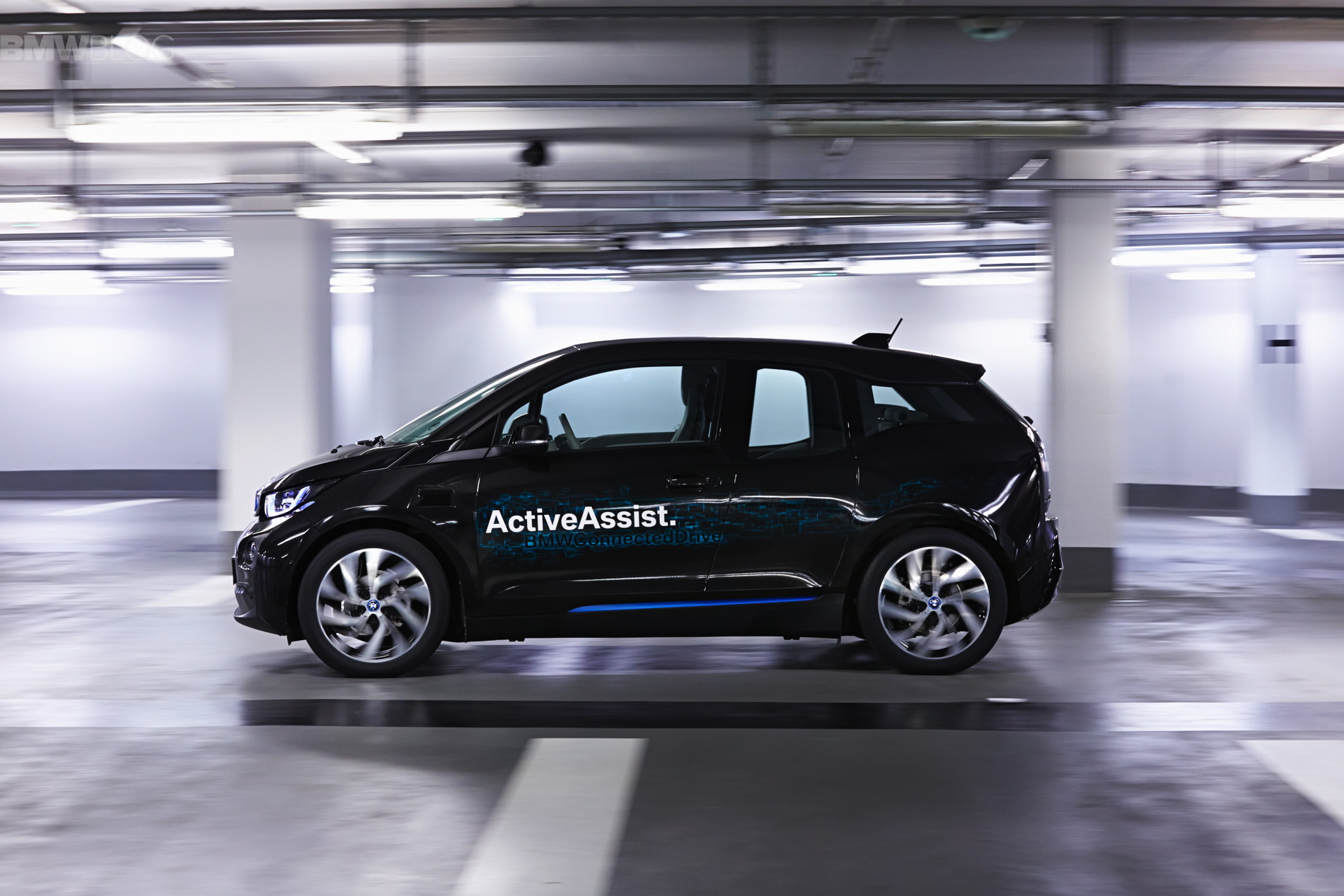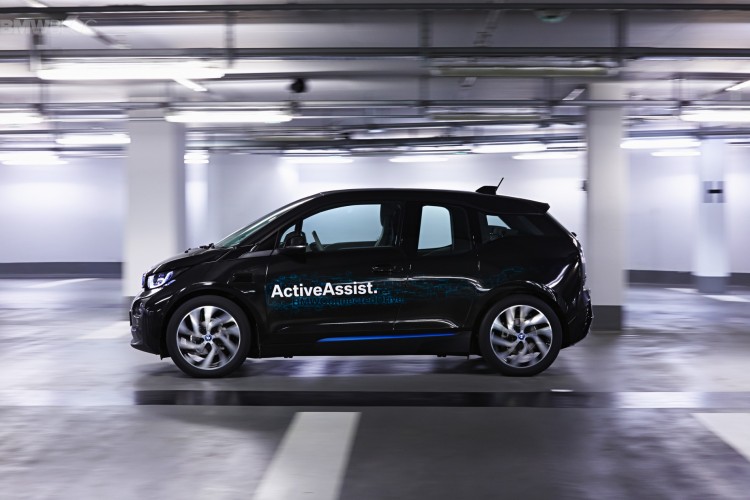At the 2015 Consumer Electronics Show (CES), BMW will be demonstrating new technologies around collision avoidance technologies, fully automated parking and navigation without GPS signals.
Navigation without GPS signals.
BMW has succeeded in achieving fully automated control of the vehicle by connecting up vehicle sensor systems and a digital site plan. This avoids dependence on the GPS signal, which is not at all precise in multi-storey car parks. Alongside the laser sensors, the research vehicle also has the processing units and necessary algorithms on board and this means it can determine its exact position in the car park, monitor the environment perfectly, and carry out independent and fully automated navigation. It is not necessary to provide car parks, for example, with complex infrastructure in order to allow cars to orientate and navigate around the area safely.
Long track record of experience in vehicle automation.
BMW Active Assist empowers implementation of partially and highly automated systems. As early as October 2009, the BMW Group gave a highly automated demonstration of driving round the North Loop of the Nürburgring – the world’s toughest racing track – on an ideal line in the precursor research project BMW Track Trainer. Later on, the BMW Track Trainer developed by engineers from BMW Group Research and Engineering demonstrated its superior performance on the race tracks at Laguna Seca, Zandvoort and Valencia, and back home on the Hockenheimring and the Lausitzring. The researchers gathered some important practical experience under extreme conditions at these venues for vehicle control and positioning.
Additional important findings were also provided by the research project entitled BMW Emergency Stop Assistant. If the driver collapses, for example in a medical emergency such as a heart attack, the vehicle changes to highly automated mode and can steer safely to the side of the road and initiate an emergency call.
In the middle of 2011, a test vehicle from the BMW Group drove along the A9 motorway from Munich towards Nuremberg without any interventions from the driver. In the meantime, this research prototype has been consistently developed. The test vehicle brakes, accelerates and overtakes entirely independently. These interventions are carried out in response to the momentary traffic situation in a speed range from 0 to 130 km/and in compliance with the highway code. Our specialists have now driven some 20,000 test kilometres. The vehicle is equipped with sensor systems like lidar, radar, ultrasound and camera recording on all sides.
Since January 2013, the BMW Group has been working with international automobile supplier Continental with the aim of moving the project forward. The overarching goal of the research partnership is to lay the groundwork for highly automated drive functions up to the year 2020 and beyond.
The different levels of vehicle automation.
Assistance systems increase safety and comfort in road traffic, although the degree of driver support varies. The highest level of automation is provided by fully automated assistance systems.
Drive functions are fully automated if they no longer need to be monitored by the driver. There is no longer even any need for the driver to be in the vehicle – as in the case of the fully automated Remote Valet Parking Assistant.
The precursors for fully automated driving are highly automated systems which do not need to be monitored continuously by the driver. They take over the linear steering (forward and reverse motion) and transverse steering (sideways motion with the steering wheel) of the vehicle.
In contrast to fully automated systems, partially automated systems take control of linear and transverse steering of the vehicle (e.g. Congestion Assistant), but they need to be monitored at all times by the driver.
Assisted systems (e.g. ACC) in turn only provide support for the driver in linear or transverse steering






































































